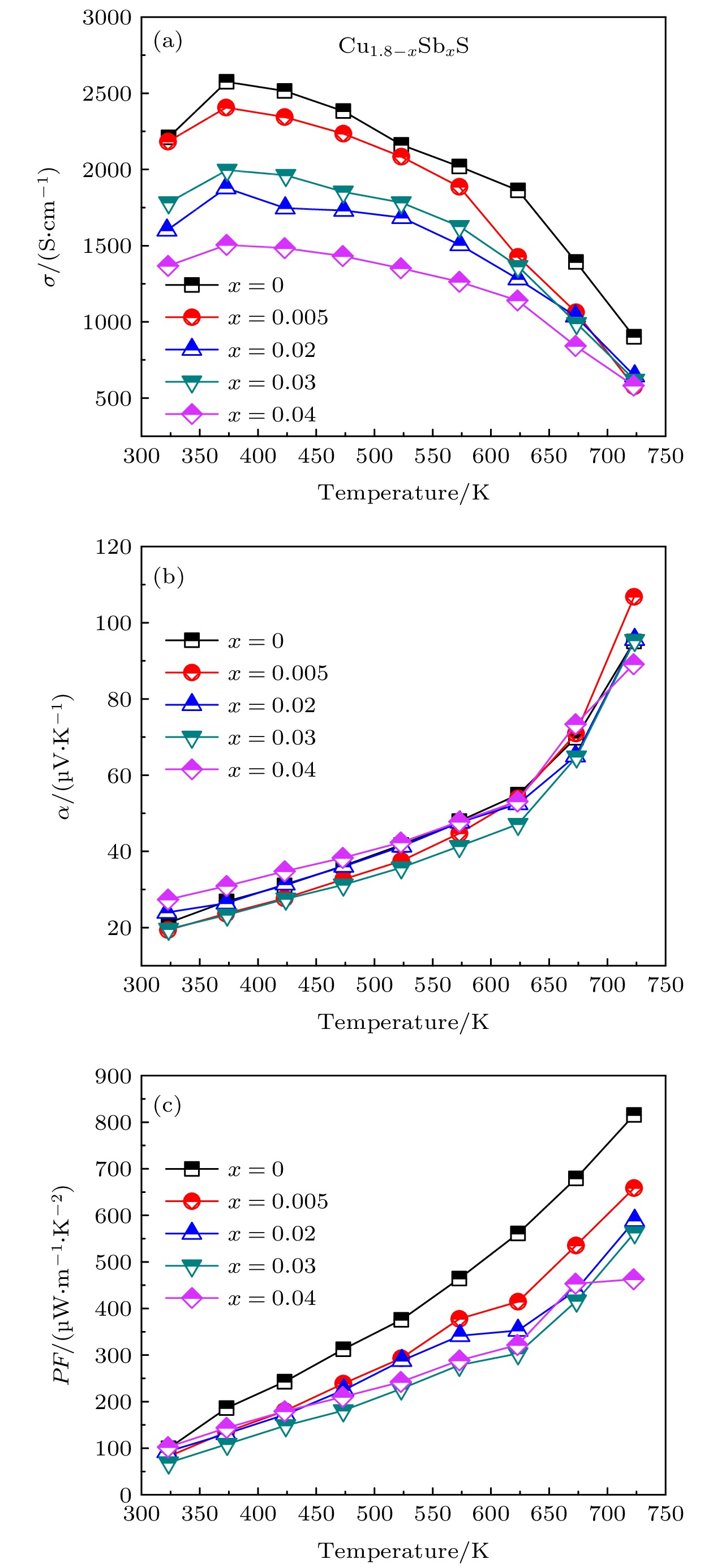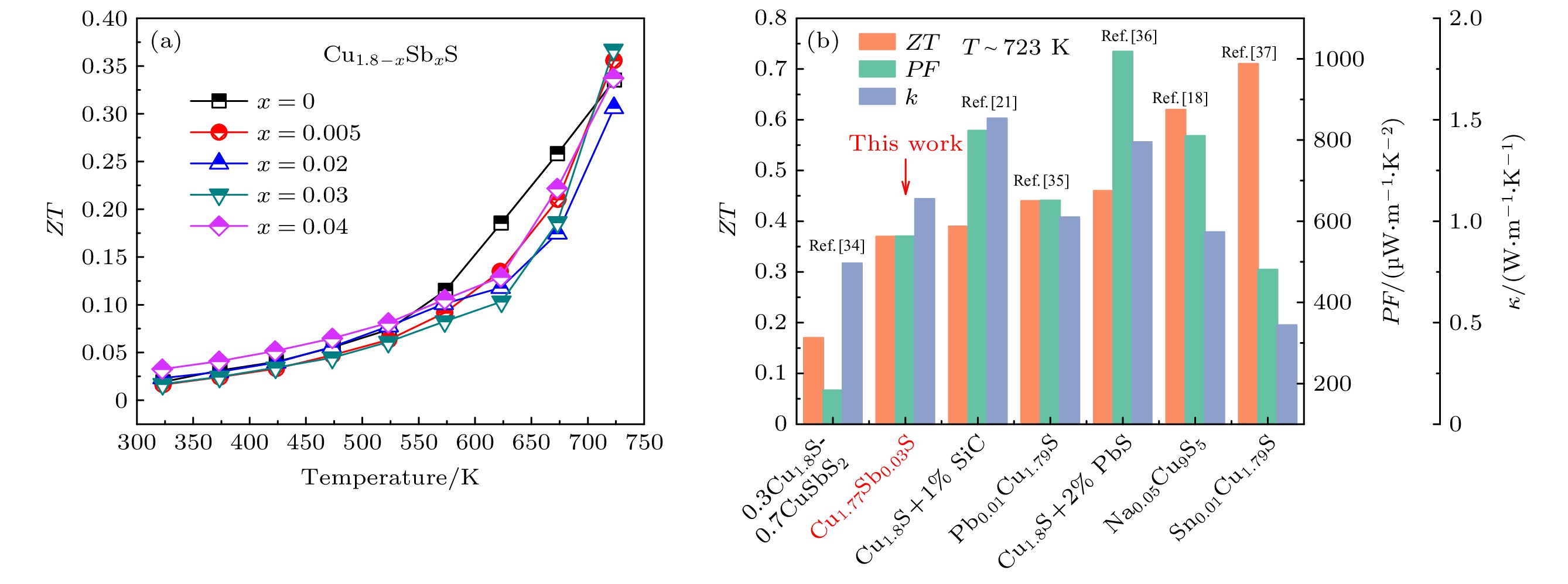Cu
1.8S-based materials have become potential thermoelectric materials due to their rich raw material reserves, low toxicity, and excellent electrical and thermal properties. In this study, a series of Cu
1.8–xSb
xS (
x= 0, 0.005, 0.02, 0.03, 0.04) bulk materials is synthesized by using mechanical alloying combined with spark plasma sintering process. This preparation method can shorten the preparation cycle of materials, and effectively improve the research and development efficiency of thermoelectric (TE) materials due to its simple process. The effects of different Sb doping amounts on the structure, micromorphology, and thermoelectric transport properties of Cu
1.8–xSb
xS phase are investigated. The results show that when 0 ≤
x< 0.02, the bulk samples are single-phase Cu
1.8S. With the further increase of Sb doping to 0.02 ≤
x≤ 0.04, the second phase CuSbS
2is formed when Sb content exceeds the solid solubility limit of
x= 0.02 in Cu
1.8S, all Cu
1.8–xSb
xS bulk samples exhibit p-type conductivity characteristics. Benefitting from the synergistic phonon scattering effect by multiscale defects, such as point defects (
${\rm{Sb}}_{{\rm{Cu}}}^{ \bullet\bullet }$

,
$ {\rm{V}}_{\rm{S}}^{ \bullet \bullet } $

), nanopores, secondary phases (CuSbS
2), and dislocations, the thermal conductivity
κdeclines significantly from 1.76 W·m
–1·K
–1(
x= 0) to 0.99 W·m
–1·K
–1at 723 K for the Cu
1.76Sb
0.04S sample. Finally, the peak dimensionless TE figure of merit (
ZT) value of 0.37 is achieved at 723 K for Cu
1.77Sb
0.03S resulting from a low thermal conductivity of 1.11 W·m
–1·K
–1combining an appropriate power factor of 563 μW·m
–1·K
–2, which is 12% higher than that (0.33) of pristine Cu
1.8S. Although the Sb doped Cu
1.8S-based samples have lower thermal conductivity
κ, the reduced power factor cannot be offset by reducing the thermal conductivity
κ, so the TE figure of merit (
ZT) value is not significantly improved. Therefore, there is still much room for improving the performance of Sb doped Cu
1.8S-based thermoelectric material, and its thermoelectric performance can be further optimized through nano-second phase recombination, energy band engineering, and introducing multi-scale defects, etc. Our results suggest that the introduction of Sb into thermoelectric materials is an effective and convenient strategy to improve
ZTvalue by reducing thermal conductivity
κ.
















 DownLoad:
DownLoad:




